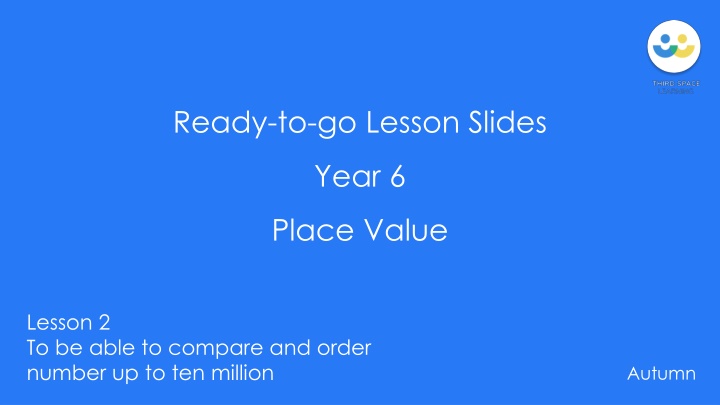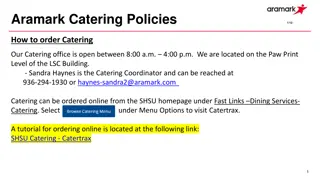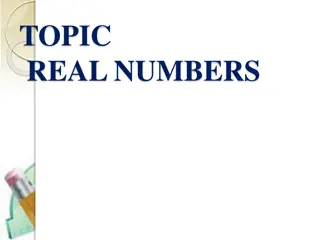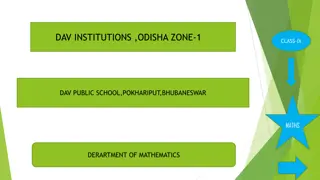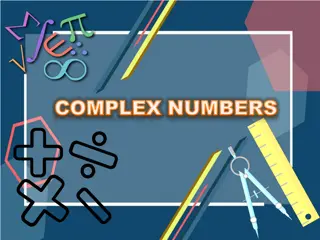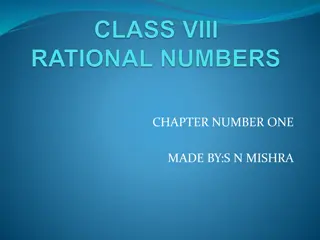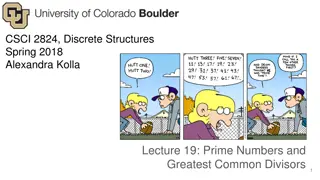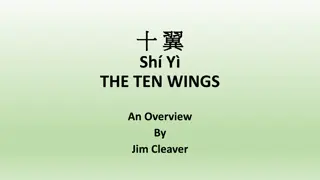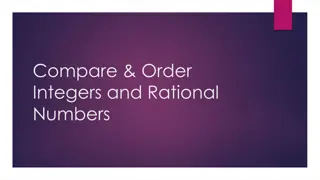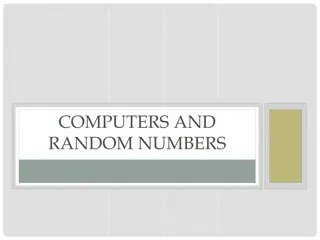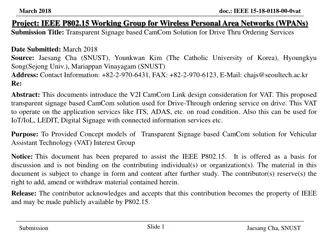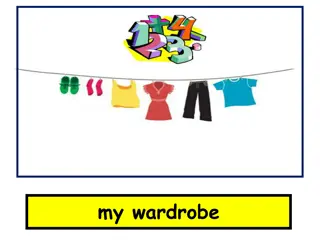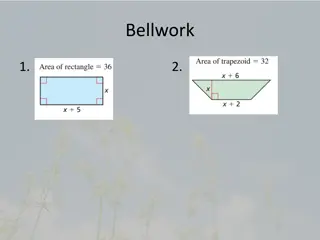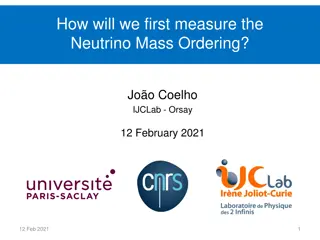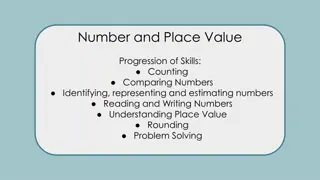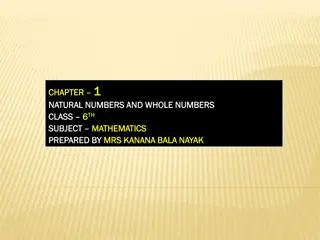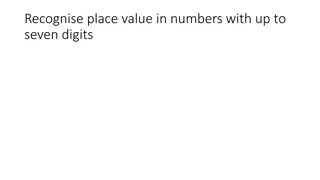Comparing and Ordering Numbers up to Ten Million Lesson Slides
Recap and reinforce the ability to compare and order numbers up to ten million with engaging lesson slides. Key concepts include understanding place value, using comparison vocabulary, and applying symbols correctly. Practice includes comparing and ordering numbers using different representations and given information, culminating in a hinge question assessment point. Enhance student learning through a structured lesson plan covering key vocabulary, sentence stems, and success criteria.
Download Presentation

Please find below an Image/Link to download the presentation.
The content on the website is provided AS IS for your information and personal use only. It may not be sold, licensed, or shared on other websites without obtaining consent from the author.If you encounter any issues during the download, it is possible that the publisher has removed the file from their server.
You are allowed to download the files provided on this website for personal or commercial use, subject to the condition that they are used lawfully. All files are the property of their respective owners.
The content on the website is provided AS IS for your information and personal use only. It may not be sold, licensed, or shared on other websites without obtaining consent from the author.
E N D
Presentation Transcript
Ready-to-go Lesson Slides Year 6 Place Value Lesson 2 To be able to compare and order number up to ten million Autumn
Recap https://charanga.edsential.com/c/1312387-freestyle/1312253-ks2-topics/1314505-tuning-the- tables/lessons/188772-tuning-the-tables.
Summary Key Vocabulary and Sentence Stems Hinge Question (Assessment Point) Lesson Introduction Slide (Learning Objective and Success Criteria) Starter Compare numbers to one million Key Concept Introduction How to compare numbers Guided Practice Comparing numbers with different representations Independent Practice 1 Comparing numbers with different representations Guided Practice Ordering numbers Independent Practice 2 Ordering numbers Guided Practice Ordering numbers using given information Independent Practice 3 Ordering numbers using given information Let s Reflect Explain how to compare and order Support Slides Based on Year 5 Compare and order numbers to one million
To be able to compare and order number up to ten million Key Vocabulary: Ten million Greater than Less than Ascending Descending Sentence Stems: To compare two numbers, start with the largest place value digit. Compare digits with the same place value.
To be able to compare and order number up to ten million Hinge Question: Which symbol should be used to complete the statement? 1,557,414 1,557,441 < = A C None of the options, they cannot be compared. > B D
To be able to compare and order numbers up to ten million Success Criteria I can explain the value of each digit in a seven-digit number I can explain how to compare numbers I can use comparison vocabulary and symbols to compare numbers
To be able to compare and order number up to ten million Starter: Compare the numbers using <, > or =. HTh TTh Th H T O HTh TTh Th H T O < = 567,097 500,000 + 60,000 + 7,000 + 90 + 7 Four hundred and twenty thousand, Four hundred and two thousand, five < five hundred and thirty four. hundred and thirty four. Answers
To be able to compare and order number up to ten million Explain how you would compare these two numbers. 8,488,488 884,884 Explain which symbol you would use and why.
To be able to compare and order number up to ten million Guided Practice: Compare these numbers using <, > or =. Explain how you found your answers. > a. 5,451,229 7,451,292 M HTh TTh Th H T O M HTh TTh Th H T O > a. a. 2,580,000 + 300,000 2,580,000 + 3,000,000 < Answers
To be able to compare and order number up to ten million Guided Practice: How could you complete this place value chart to make the statement true? Is there more than one way? M HTh TTh Th H T O M HTh TTh Th H T O > The number given is 1,232,302. The number in the empty place value grid must be less than this, for example, 1,200,000 or 299,000 or 1. Answers
To be able to compare and order number up to ten million Independent Practice:
To be able to compare and order number up to ten million Guided Practice: Put these in ascending order. 2,451,113 2,452,000 2,341,042 Explain how you decided on the order. Ascending order means smallest to largest. 2,341,042 2,451,113 2,452,000 Answers
To be able to compare and order number up to ten million Guided Practice: Put these in descending order. a. 1,345,000 1,453,000 1,034,500 a. 1,453,000 1,345,000 1,034,500 a. 8,228,981 8,222,981 8,228,971 a. 8,228,981 8,228,971 8,222,981 a. 2,381,989 2,381,999 2,381,899 a. 2,381,999 2,381,989 2,381,899 Answers
To be able to compare and order number up to ten million Independent Practice:
To be able to compare and order number up to ten million Guided Practice: The mathstronaut has written six 7-digit numbers on cards and put them in ascending order. His largest number is 1,432,000 His smallest number is 1,234,000 He says he has used the same digits in each number. What could his missing numbers be? 1,234,000 1,432,000 His missing numbers could be any number greater than 1,234,000 and less than 1,432,000 using the digits 1,2,3,4,0,0,0. For example, 1,243,000; 1,240,300; 1,240,030; 1,240,003; 1,324,000; 1,400,032 and so on Answers
To be able to compare and order number up to ten million Independent Practice:
To be able to compare and order number up to ten million Let s Reflect: Explain how to compare the numbers and put them in descending order. 1,230,000 123,000 1,203,000
Support Slides The following slides are based on Year 5 Place Value Compare and order numbers to one million
To be able to compare and order numbers up to one million Explain how to compare these numbers. < > 5,120 7,512 170,000 100,000 Answers
To be able to compare and order numbers up to one million What is the largest number you can make from 6 counters? What is the smallest number you can make from 6 counters? M HTh TTh Th H T O The largest number is 6,000,000. The smallest number is 6. Answers
To be able to compare and order numbers up to one million Order these numbers in ascending order (smallest to largest). M HTh TTh Th H T O a. M HTh TTh Th H T O b. M HTh TTh Th H T O c. B then A then C. Answers
